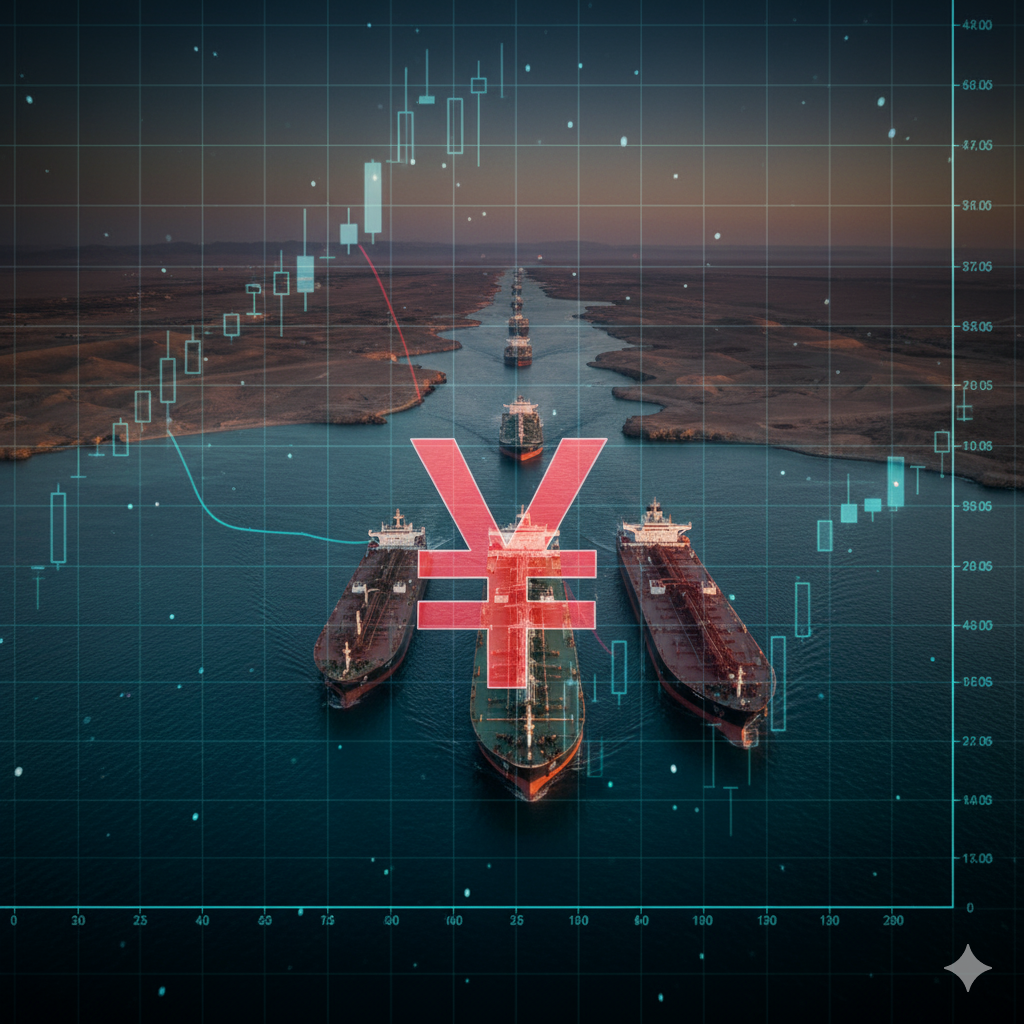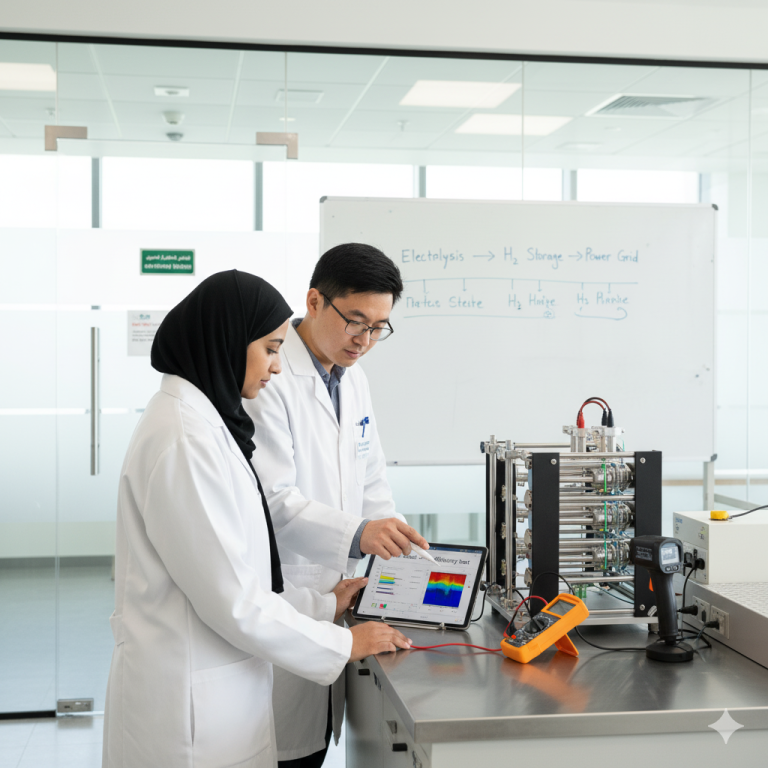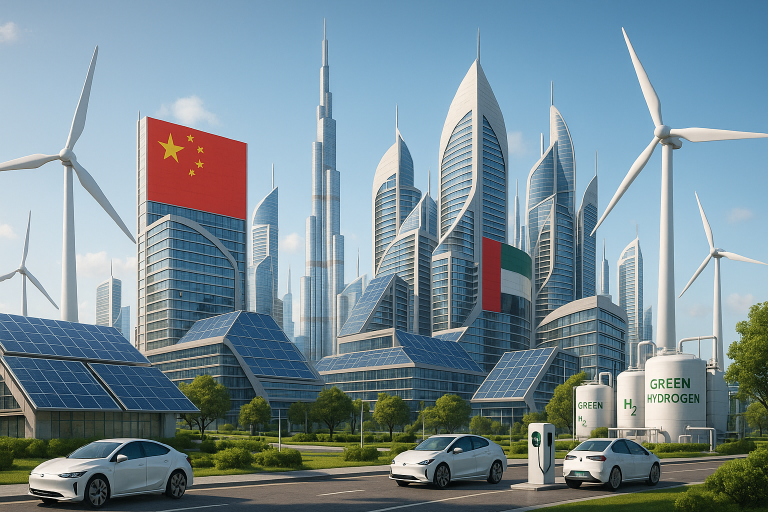The Yuan’s Ascent: Pricing Oil in a Post-Dollar World
In the intricate dance of global geopolitics and economics, few shifts are as profound and potentially transformative as the evolving landscape of energy finance. For decades, the petrodollar system has stood as an unyielding pillar, anchoring the global oil trade firmly to the United States dollar. Yet, beneath this seemingly immutable structure, tectonic plates are shifting. A new dawn is breaking, heralded by the deepening strategic partnership between China and the United Arab Emirates (UAE), and the quiet but determined ascent of the Chinese Yuan in the realm of oil pricing. This burgeoning cooperation is not merely a bilateral affair; it is a powerful testament to a world increasingly seeking diversification, resilience, and a multipolar economic order. This article will delve into the historical tapestry of China-UAE relations, explore the robust industrial collaborations that define their energy partnership, analyze the Yuan’s growing role in challenging the petrodollar’s dominance, and cast an eye towards the promising future implications of this strategic alignment.
I. Historical Foundations: Four Decades of Deepening Ties
The relationship between China and the UAE, while officially formalized relatively recently, is rooted in a history far older than modern diplomacy. Echoes of the ancient Silk Road, a conduit for goods, ideas, and cultures for millennia, resonate strongly in their contemporary partnership. This historical precedent laid the groundwork for a relationship built on mutual respect and shared prosperity, a foundation that has been meticulously strengthened over the past four decades.
Diplomatic ties were formally established in 1984, marking the beginning of a new chapter. A pivotal moment arrived in 1990 when Sheikh Zayed bin Sultan Al Nahyan, the UAE’s revered Founding Father, embarked on a landmark visit to China. This was not just a ceremonial gesture; it was a strategic overture, making him the first head of state from a Gulf Cooperation Council (GCC) nation to undertake such a visit. This pioneering engagement set a powerful precedent, signaling the UAE’s forward-looking vision and its intent to forge robust relationships beyond traditional Western alliances. The foresight demonstrated by Sheikh Zayed and his Chinese counterparts has since blossomed into a Comprehensive Strategic Partnership, characterized by an ever-expanding web of economic, political, and cultural exchanges.
The tangible fruits of this partnership are evident in the remarkable growth of trade and investment. In 2023, the non-oil trade between China and the UAE surged by an impressive 12%, reaching a substantial US$80.6 billion [1]. This figure underscores the dynamic and diversified nature of their economic engagement, moving beyond mere energy transactions. Investment flows have been equally robust and reciprocal. Between 2003 and 2022, the UAE channeled US$11.4 billion into China, targeting vital sectors such as real estate, financial services, green energy, and transportation. Concurrently, Chinese investment into the UAE during the same period stood at US$6.9 billion, highlighting a balanced and mutually beneficial economic relationship [1]. These investments are not just capital injections; they represent a shared commitment to long-term growth and development, fostering innovation and creating new opportunities across both economies.
A significant accelerator of this partnership has been China’s ambitious Belt and Road Initiative (BRI). The UAE has emerged as an enthusiastic and active participant in this global infrastructure and development strategy, aligning seamlessly with China’s broader vision for energy interconnection, first articulated in 2013. The BRI has provided a powerful framework for extensive infrastructure partnerships, leading to the development of mega-projects that enhance connectivity and facilitate trade. From modern ports to advanced road networks, these collaborations are physically knitting the two nations closer, creating efficient arteries for the flow of goods, capital, and expertise. This strategic alignment under the BRI is a clear indicator of the UAE’s pivotal role as a regional hub and its embrace of a future defined by greater global interconnectedness.
II. Industrial Synergy: A Partnership for Energy Resilience and Innovation
The robust historical and diplomatic ties between China and the UAE have naturally paved the way for a profound industrial synergy, particularly within the energy sector. This partnership extends far beyond simple buyer-seller dynamics, evolving into a comprehensive collaboration aimed at securing energy resilience, fostering innovation, and navigating the global energy transition. The industrial perspective reveals a multifaceted engagement, encompassing traditional hydrocarbons, pioneering renewable energy initiatives, and cutting-edge technological integration.
A. Traditional Hydrocarbons: Securing Supply and Demand
At the heart of the China-UAE energy relationship lies the strategic imperative of securing stable supply and demand for traditional hydrocarbons. China, as the world’s largest energy consumer, and the UAE, a pivotal global energy producer, find natural alignment in this domain. This alignment is concretized through significant long-term agreements and investments. For instance, the Abu Dhabi National Oil Company (ADNOC) has deepened its ties with Chinese counterparts through expanded crude oil and liquefied natural gas (LNG) supply deals. A notable example is the agreement between ADNOC and China National Offshore Oil Corporation (CNOOC) for the annual purchase of 500,000 metric tons of LNG, commencing in 2026 [2]. Such agreements provide China with reliable energy sources and the UAE with guaranteed markets, fostering mutual energy security.
Furthermore, Chinese state-owned enterprises (SOEs) have made substantial investments in the UAE’s upstream oil and gas sector. Companies like China National Petroleum Corporation (CNPC) have been instrumental in the high-quality development of UAE offshore concessions over the past decade [3]. This direct investment signifies a deeper level of partnership, moving beyond transactional relationships to shared ownership and operational involvement. The commitment is further exemplified by China’s Zhenhua Oil, which has doubled its crude offtake from ADNOC to an impressive 200,000 barrels per day, underscoring the growing scale and strategic importance of this bilateral energy trade [4]. These collaborations ensure a steady flow of vital resources, underpinning the industrial growth of both nations.
B. The Green Transition: Collaborative Ventures in Renewable Energy
Recognizing the global imperative of climate action and the economic opportunities presented by the energy transition, China and the UAE are increasingly collaborating on renewable energy and low-carbon technologies. This forward-looking aspect of their partnership positions both nations at the forefront of sustainable development. The UAE’s Masdar, a global leader in renewable energy, has forged significant partnerships with Chinese entities, driving clean energy projects both regionally and internationally. These collaborations leverage China’s advanced manufacturing capabilities in solar panels and batteries, and the UAE’s strategic investment capacity and ambitious renewable energy targets.
The presence of prominent Chinese battery and solar manufacturers, including LONGi, JA Solar, JinkoSolar, and Trina, across the UAE, Saudi Arabia, Egypt, and Iraq, highlights the region’s embrace of Chinese green technology [2]. This influx of technology and expertise is crucial for the UAE’s diversification efforts and its commitment to reducing carbon emissions. The joint commitment to developing innovative low-carbon technologies and fostering a sustainable future is a cornerstone of their evolving energy dialogue, reflecting a shared vision for a greener global economy. This proactive engagement in the green transition not only addresses environmental concerns but also creates new avenues for economic growth and technological exchange.
C. Technological Integration and Digital Transformation
Beyond traditional and renewable energy, the China-UAE partnership is characterized by robust technological integration and a shared ambition for digital transformation. This extends to critical infrastructure and advanced technologies that are shaping the future of industries. Huawei, a Chinese technology giant, has played a pivotal role in the UAE’s push for a 5G network, laying the digital backbone for smart infrastructure and advanced connectivity [2]. This collaboration in telecommunications is foundational, enabling the development of smart cities, enhancing industrial efficiency, and facilitating seamless digital communication.
Furthermore, cooperation in artificial intelligence (AI) and other advanced technologies is becoming increasingly prominent. Both nations recognize the transformative potential of these technologies across various sectors, from energy management to logistics and urban development. The UAE’s strategic investments in technology and innovation, coupled with China’s technological prowess, create a fertile ground for joint research, development, and deployment of next-generation solutions. This technological synergy is not merely about adopting existing solutions but about co-creating future innovations that will drive economic competitiveness and societal progress in an increasingly digital world. The integration of these advanced technologies ensures that the China-UAE energy partnership remains dynamic, forward-looking, and resilient in the face of evolving global challenges.
IV. The Yuan’s Ascent: Reshaping Oil Pricing and Challenging the Petrodollar
The most significant and perhaps revolutionary aspect of the evolving China-UAE energy partnership lies in the quiet but determined ascent of the Chinese Yuan (Renminbi, RMB) in the global oil pricing mechanism. This development is not an isolated incident but the culmination of China’s long-term strategic efforts to diversify its financial relationships and reduce its reliance on the US dollar, thereby challenging the entrenched petrodollar system that has dominated international energy trade for decades.
A. The Genesis of the Petroyuan
China’s strategic imperative to reduce its dependence on the US dollar in commercial transactions dates back to at least 2009. This policy was born out of a recognition of the vulnerabilities inherent in a dollar-centric global financial system, particularly as experienced during the 2007-2009 financial crisis. Beijing criticized the global energy system as unfair and unbalanced, with the dollar benchmark imposing limits on China’s price-making capacity in the oil sector and exposing its energy policy to shifts in American monetary policy [5]. The drive to establish an alternative gained significant momentum with President Xi Jinping’s landmark visit to Riyadh in December 2022, where he explicitly called for the full utilization of the Shanghai Petroleum and Natural Gas Exchange (SHPGX) as a platform for Yuan settlement of oil and gas trade [6]. This declaration signaled a clear intent to foster a new financial architecture for energy transactions.
B. Key Milestones in Yuan-Denominated Energy Trade
Concrete steps towards the
realization of the petroyuan have been swift and impactful. A pivotal moment occurred on March 28, 2023, when the SHPGX announced the first-ever deal for importing 65,000 tons of liquefied natural gas (LNG) from the UAE, settled entirely in Chinese Yuan. This groundbreaking transaction involved China National Offshore Oil Company (CNOOC) and French TotalEnergies, with TotalEnergies confirming the LNG originated from the Persian Gulf state [7]. This deal was a clear departure from the decades-long practice of conducting global oil sales exclusively in US dollars, sending a powerful signal to international markets.
Further solidifying the Yuan’s role, the Shanghai International Energy Exchange (INE) launched RMB-denominated oil futures contracts in March 2018. These contracts were revolutionary in several aspects. Firstly, they are gold-convertible, offering an alternative hedging mechanism for participants [8]. Secondly, they are specifically aligned with Gulf-Asia crude realities, based on the medium-sour crude predominantly produced in the Gulf region (including the UAE, Oman, Qatar, Yemen, and Iraq) and primarily exported to Asia [8]. This direct relevance to the primary trade flows between the Gulf and Asia provides a more accurate and regionally pertinent pricing benchmark than traditional Brent or Texas crude contracts. The INE futures quickly gained rapid market acceptance, becoming the third most actively traded crude oil future globally within a year, with a trading volume equivalent to 14% of the global market. Major commodity traders like Glencore PLC and Trafigura Group, along with 68 overseas brokerages from 23 countries, including Western financial institutions such as JP Morgan, Goldman Sachs, BNP Paribas, and Société Générale, have actively participated in these contracts [8]. Beyond oil, the Shanghai exchange now offers 23 varieties of RMB-denominated futures and options trades, with cross-border RMB settlement for major commodities reaching RMB 1.5 trillion in the first nine months of 2023, a 50% increase compared to the whole of 2022 [8]. This demonstrates a clear momentum for China’s efforts to assert price-making power over essential commodities.
C. Implications for the Petrodollar System
The emergence of Yuan-denominated energy trade, particularly with key oil producers like the UAE, carries profound implications for the long-standing petrodollar system. It signifies a tangible departure from the dollar’s exclusivity in global oil sales, introducing a credible alternative for energy transactions. This shift is part of a broader trend of de-dollarization, driven by various geopolitical and economic factors, including a response to US policy and a desire for greater monetary autonomy among nations [7].
The Yuan’s growing acceptance as an international currency is undeniable. It has become the fifth-largest payment currency, the third-largest in trade settlement, and the fifth-largest reserve currency globally. Its share in foreign exchange trades has expanded significantly, reflecting its increasing prominence in the international financial system [7]. While challenges remain, particularly concerning China’s regulated capital account and the depth of its financial markets, the strategic moves by China and its partners like the UAE are steadily carving out a new space for the Yuan in global energy finance. This evolution is not about outright replacing the dollar overnight, but rather about fostering a more diversified and multipolar global financial architecture, offering nations greater flexibility and reducing systemic risks associated with over-reliance on a single currency. The petroyuan, therefore, represents a significant step towards a more balanced and resilient international economic order.
V. Future Trajectories: A Diversified and Interconnected Energy Future
The strategic partnership between China and the UAE, propelled by deepening energy cooperation and the rising influence of the Yuan, is charting a course towards a more diversified and interconnected global energy future. This trajectory is characterized by continued expansion into new sectors, an evolving global financial architecture, and a shared vision for mutual prosperity and stability.
A. Continued Deepening of China-UAE Energy and Economic Ties
The collaborative spirit between China and the UAE is set to broaden its scope, extending beyond traditional energy and infrastructure into a wider array of strategic sectors. Manufacturing, technology, healthcare, and transportation are emerging as new frontiers for joint ventures and investments. This expansion is driven by the UAE’s ambitious economic diversification plans, such as Vision 2030, which align well with China’s industrial and technological prowess. For instance, Huawei’s involvement in the UAE’s 5G network and digital infrastructure is a testament to this deepening technological partnership [2].
Crucially, Gulf sovereign wealth funds, including Saudi Arabia’s Public Investment Fund (PIF) and Abu Dhabi’s ADQ, are increasingly directing their investments towards China, particularly in high-growth sectors like technology and green energy [2]. This strategic allocation of capital reflects a long-term bet on China’s economic growth prospects and its leadership in innovative industries. These investments are not merely financial transactions but represent a deeper integration of their economies, fostering shared interests and mutual development in a rapidly changing global landscape.
B. The Evolving Global Financial Architecture
As the Yuan continues its ascent in energy pricing, the global financial architecture is undergoing a subtle yet significant transformation. The potential for increased RMB settlements in commodity markets extends far beyond oil, encompassing a wider range of raw materials and goods. This trend offers nations greater flexibility in their international trade and financial dealings, reducing their exposure to the volatility of a single dominant currency. While challenges such as China’s regulated capital account and the relative depth of its financial markets remain considerations for the Yuan’s full internationalization, ongoing reforms and the increasing volume of cross-border RMB transactions indicate a clear path forward [5]. The gradual shift towards a multipolar currency system is likely to enhance global financial stability by distributing risk and offering more choices to international traders and investors.
C. A Positive Outlook: Mutual Prosperity and Global Stability
The China-UAE partnership, and the broader implications of the Yuan’s role in energy pricing, contribute to a positive outlook for mutual prosperity and global stability. Both nations share a vision for a more equitable and prosperous world, actively promoting multilateralism through their participation in international organizations such as the United Nations and the BRICS group of nations [1]. This collaborative approach emphasizes dialogue, mutual respect, and the importance of collective action in addressing global challenges like climate change, sustainable development, and peacebuilding. By building bridges between East and West, and fostering cooperation between the Global South and North, China and the UAE are demonstrating how strategic partnerships can drive innovation, enhance economic resilience, and promote a more balanced and harmonious international order.
VI. Conclusion: Forging a Path to a Multipolar Energy Order
The narrative of China-UAE energy cooperation and the Yuan’s ascent in oil pricing is a compelling story of strategic foresight, mutual benefit, and a proactive response to the evolving global economic landscape. What began as diplomatic overtures four decades ago has blossomed into a robust Comprehensive Strategic Partnership, characterized by deep industrial synergy across traditional hydrocarbons, pioneering renewable energy initiatives, and cutting-edge technological integration. The groundbreaking move to settle energy deals in Yuan, exemplified by the China-UAE LNG transaction and the success of RMB-denominated oil futures on the Shanghai International Energy Exchange, marks a significant challenge to the long-standing petrodollar system. This is not merely a transactional shift but a foundational one, contributing to a more diversified and resilient global financial architecture.
This partnership underscores a shared commitment to innovation, economic resilience, and a positive, forward-looking vision for the future. It highlights how two nations, through strategic collaboration, can not only secure their own energy and economic interests but also contribute to a more balanced and multipolar global order. The enduring legacy of this cooperation will undoubtedly be its role in forging a path towards a future where economic power is more equitably distributed, and international trade is conducted with greater flexibility and stability. The Yuan’s ascent in the world of oil pricing is more than a financial footnote; it is a powerful symbol of a new era in global energy dynamics, promising mutual prosperity and enhanced global stability for decades to come.
References
[1] WAM. (2024, June 3). 40 Years of UAE & China: Towards Global Cooperation & Economic Growth. Retrieved from https://www.wam.ae/en/article/13y4lco-years-uae-china-towards-global-cooperation
[2] CKGSB Knowledge. (2025, July 31). China–Middle East Relations in Transition. Retrieved from https://english.ckgsb.edu.cn/knowledge/article/china-middle-east-relations-in-transtion/
[3] China Daily. (2025, September 1). CNPC’s high-quality development in the UAE. Retrieved from https://www.chinadaily.com.cn/a/202509/01/WS68b51611a3108622abc9e331.html
[4] Reuters. (2025, August 14). China’s Zhenhua Oil doubles crude offtake from UAE in new deal, sources say. Retrieved from https://www.reuters.com/business/energy/chinas-zhenhua-oil-doubles-crude-offtake-uae-new-deal-sources-say-2025-08-14/
[5] Noria Research. (2024, July 1). The Petroyuan and Renminbi Internationalization: Probing Gulf-China Relations. Retrieved from https://noria-research.com/mena/the-petroyuan-and-renminbi-internationalization-probing-gulf-china-relations/
[6] Tactical Report. (2025, July 7). UAE-China Energy Ties: New oil index, yuan payments, and BRI expansion. Retrieved from https://www.tacticalreport.com/daily/63656-uae-china-energy-ties-new-oil-index-yuan-payments-and-bri-expansion
[7] The Cradle. (2023, April 6). The first China-UAE gas deal in yuan: A new blow to dollar dominance. Retrieved from https://thecradle.co/article-view/23348/the-first-china-uae-gas-deal-in-yuan-a-new-blow-to-dollar-dominance
[8] Noria Research. (2024, July 1). The Petroyuan and Renminbi Internationalization: Probing Gulf-China Relations. Retrieved from https://noria-research.com/mena/the-petroyuan-and-renminbi-internationalization-probing-gulf-china-relations/







